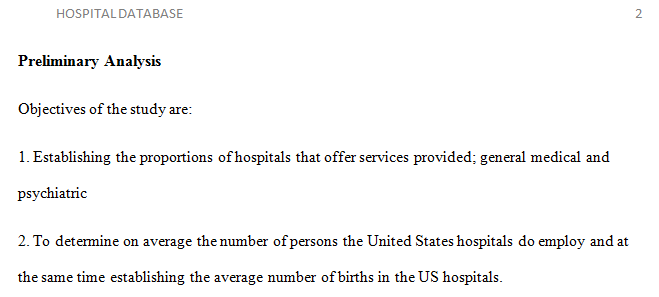This signature assignment is designed to align with specific program student learning outcome(s) in your program.
Signature Assignment
About Your Signature Assignment
This signature assignment is designed to align with specific program student learning outcome(s) in your program. Program Student Learning Outcomes are broad statements that describe what students should know and be able to do upon completion of their degree. The signature assignments might be graded with an automated rubric that allows the University to collect data that can be aggregated across a location or college/school and used for program improvements.
Purpose of Assignment
The purpose of this assignment is for students to synthesize the concepts learned throughout the course. This assignment will provide students an opportunity to build critical thinking skills, develop businesses and organizations, and solve problems requiring data by compiling all pertinent information into one report.
Assignment Steps
Resources: Microsoft Excel®, Signature Assignment Databases, Signature Assignment Options, Part 3: Inferential Statistics
Scenario: Upon successful completion of the degree program, say you work in the analytics department for a consulting company. Your assignment is to analyze one of the following databases:
Manufacturing
Hospital
Consumer Food
Financial
Select one of the databases based on the information in the Signature Assignment Options.
Provide a 1,600-word detailed, statistical report including the following:
Explain the context of the case
Provide a research foundation for the topic
Present graphs
Explain outliers
Prepare calculations
Conduct hypotheses tests
Discuss inferences you have made from the results
This assignment is broken down into four parts:
Part 1 – Preliminary Analysis
Part 2 – Examination of Descriptive Statistics
Part 3 – Examination of Inferential Statistics
Part 4 – Conclusion/Recommendations
Part 1 – Preliminary Analysis (3-4 paragraphs)
Generally, as a statistics consultant, you will be given a problem and data. At times, you may have to gather additional data. For this assignment, assume all the data is already gathered for you.
State the objective:
What are the questions you are trying to address?
Describe the population in the study clearly and in sufficient detail:
What is the sample?
Discuss the types of data and variables:
Are the data quantitative or qualitative?
What are levels of measurement for the data?
Part 2 – Descriptive Statistics (3-4 paragraphs)
Examine the given data.
Present the descriptive statistics (mean, median, mode, range, standard deviation, variance, CV, and five-number summary).
Identify any outliers in the data.
Present any graphs or charts you think are appropriate for the data.
Note: Ideally, we want to assess the conditions of normality too. However, for the purpose of this exercise, assume data is drawn from normal populations.
Part 3 – Inferential Statistics (2-3 paragraphs)
Use the Part 3: Inferential Statistics document.
Create (formulate) hypotheses
Run formal hypothesis tests
Make decisions. Your decisions should be stated in non-technical terms.
Hint: A final conclusion saying “reject the null hypothesis” by itself without explanation is basically worthless to those who hired you. Similarly, stating the conclusion is false or rejected is not sufficient.
Part 4 – Conclusion and Recommendations (1-2 paragraphs)
Include the following:
What are your conclusions?
What do you infer from the statistical analysis?
State the interpretations in non-technical terms. What information might lead to a different conclusion?
Are there any variables missing?
What additional information would be valuable to help draw a more certain conclusion?
20180404213113signature_assignment_options_week_6
20180404213113inferential_statistics_week_6
Answer preview this signature assignment is designed to align with specific program student learning outcome(s) in your program.
APA
1835 words

